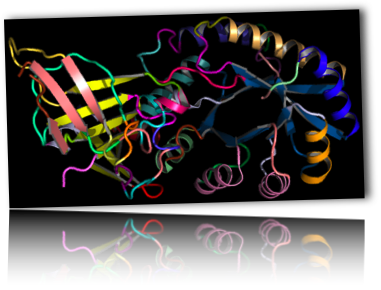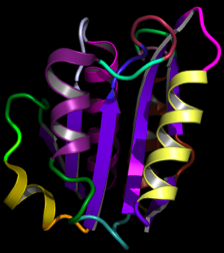SST is a new secondary structural assignment program we developed that assigns
secondary structure to protein coordinate data using a rigorous
Bayesian method of minimum message length (MML) inference.
MML is a general information-theoretic
framework from the statistical inference literature which links hypothesis
selection with data compression.
SST treats assignments of secondary
structure as hypotheses that explain (or compress) the given protein coordinate data
economically. The core idea is that the best secondary structural
assignment should be able to explain (or compress) the (CA) coordinates of a given protein in
the most concise way. This is, in fact, equivalent to maximizing the joint
probability of the secondary structural hypothesis and the protein coordinate data, thus giving SST a very strong statistical formalism
to address the assignment problem.
SST:
The paper describing the methodology of assignment can be found here
- (1) delineates secondary structural elements -- helices of various description and strands of sheet -- consistently.
- (2) detects pi- and 3_10- helical caps/segments and bulges, in addition to the standard alpha-helices
- (3) assembles the various strands into consistent beta-sheets
- (4) provide a readable output of dissected secondary structural elements, with a companion pymol-loadable script to visualize these elements individually.
The paper describing the methodology of assignment can be found here
About SST

-
•To cite SST, use the following reference:
-
A. S. Konagurthu, A. M. Lesk, L. Allison, Minimum Message Length inference of secondary structure from protein coordinate data. Bioinformatics 28(12):i97-i105 (2012)
-
-



